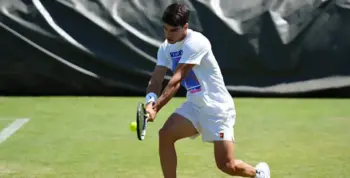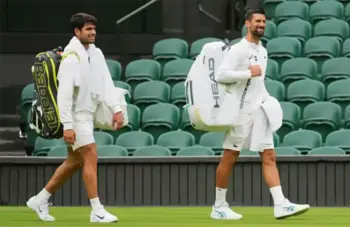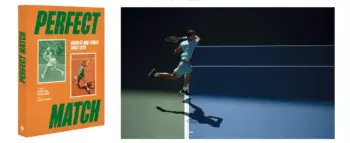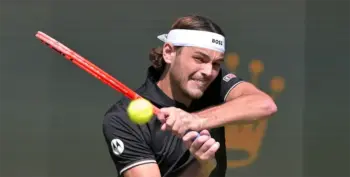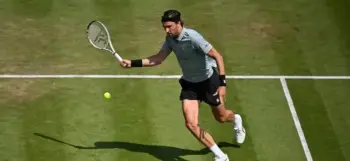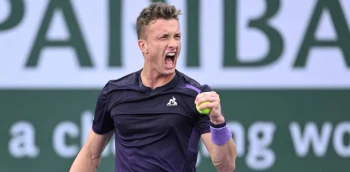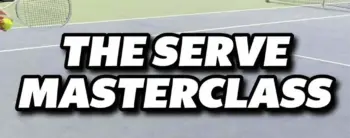Coach Evan is back, talking about the volley warm-up. The volley is an often overlooked topic these days…
What racquets are good for volleys? I would think most control racquets…
The Volley Warm-Up by Evan Gaudreau
“I didn’t realize there was that much to the volley,” a new student said.
Daniel came from a tennis system that didn’t put much value into the volley, overheads, or serves, but the teaching pro did put value in the Mcdonald’s dollar menu, spending all that earned money on cheap burgers and fries.
Mcdonald’s has its limits. So do tennis coaches.
“When you warm up,” the coach said. “You’re just going to use your base volley. It’s more like a block. There’s not much movement after contact. You just want to make your racket a wall and keep a rally going.”
Daniel stood at the net and tried to poke volleys back, contacting too far out in front and knocking quite a few into the net.
“Contact, step! Not step, contact!” Mike said. “Watch my shoulders,” he added.
The coach moved forward, taking a big step with my left foot. The momentum pulled him forward as if he was pushed from behind and my shoulders dropped to the ground.
“See how my shoulders dipped?”
“Yeah.”
“Where do you think the ball is going to go?”
“Probably in the net.”
“Why?”
“I don’t know.”
Why in the net?
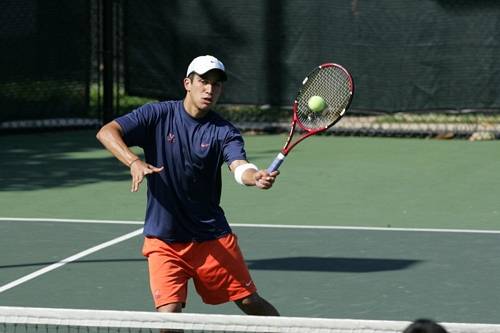
“Two reasons. One, my shoulders are dropping so quickly. The only way I can get the ball back over the net is to manipulate the face of the racket which is going cause a weak volley. And two, the contact is so far out in front and the racket is descending, that the ball will follow the momentum down into the net.”
“My previous coach always said…”
“….Out in front, Out in front, Out in front.”
“Yeah.”
“That’s going to cause you to one-step the volley and reach too far.”
“So, what am supposed to do?”
“Use two steps on the volley and on your forehand volley, you are going to start with your right foot…technically the footwork is the right step, ball contact, left step, and then get ready with your right foot following.”
Daniel looked confused.
“Watch,” Mike said. “Feed me a forehand volley.”
As the student fed Mike a forehand volley, he made a few quick steps as he moved forward, stepped with his right foot, and contacted the ball, then the momentum pulled him forward and he landed on his left foot, and then his right again and then back to the ready position.
“Oops. I just added another step I forgot about. Most volleys, especially during point play are three steps and back to the ready position.”
He mimicked using three steps on the volley.
“I see that a lot at the tennis clubs or players at the Park with One-step volleys. You can always tell who the player is who gets local lessons. They one-step the crap out of the volley and they punch through the volley.”
Punch the volley?
“Wait! Aren’t you supposed to punch the volley?”
“With your body momentum. Not your racket going through.”
Mike moved backward, a few steps behind the service line.
“Feed me a ball. Watch what happens.”
Daniel fed a ball and Mike punched through the volley with his hands. The ball shot off the racket and landed past the baseline.
“Feed me another one.”
The ball hit the same location.
Out!
On the next feed, the ball landed inside the baseline. But on the next one, I reached for the volley and it went into the net.
“That type of volley is so volatile. The timing has to be spot on. You can’t control it. If you’re slightly early, it goes in the net. If you catch it a little late, its shoots out. Back in my day, we used soft strings like synthetic gut and it absorbed the ball and you had a little more lee-way.”
The student had never used synthetic gut. He had probably never heard of it, Mike thought. Nowadays most kids were growing up on Polyester strings that made the ball jump off the racket.
“Nowadays, with the poly strings, the ball launches off the racket because of the stiffness of the string. The body is the punch and you have to break across on contact and the momentum through the contact is the punch.”
Mike fed Daniel balls. He fed regular feeds using a continental grip.
“Move back to the service line. Most volleys in matches are going to be contacted around the service line unless you’re playing a weak player. Plus, you can hit three types of volleys from there. Low, medium, and high…plus half-volleys…so actually four types.”
Daniel made a lot of errors into the net. His contact was too early. Having hit most of his training volleys from on top of the net, he was conditioned to reach for the contact and he still was using one-step on the volleys.
What Daniel didn’t know was that a lot of “high performance” academy’s stuck kids on top of the net, as the parents stared with bulging eyes, so they made most of their volleys and looked good.
After five minutes of feeding, Daniel was looking a little bit better.
What Daniel also didn’t know was the process for rehabilitation on the volley was going to take a while to get rid of the previous patterns that were molded into his game.
Summary
Notes to take with you.
Make sure you work on volleys from different locations, especially from the service line and beyond, teetering on no man’s land. Working from a variety of locations can give you a better understanding of the volley and the fact that each location offers a slightly different contact point and finish.




